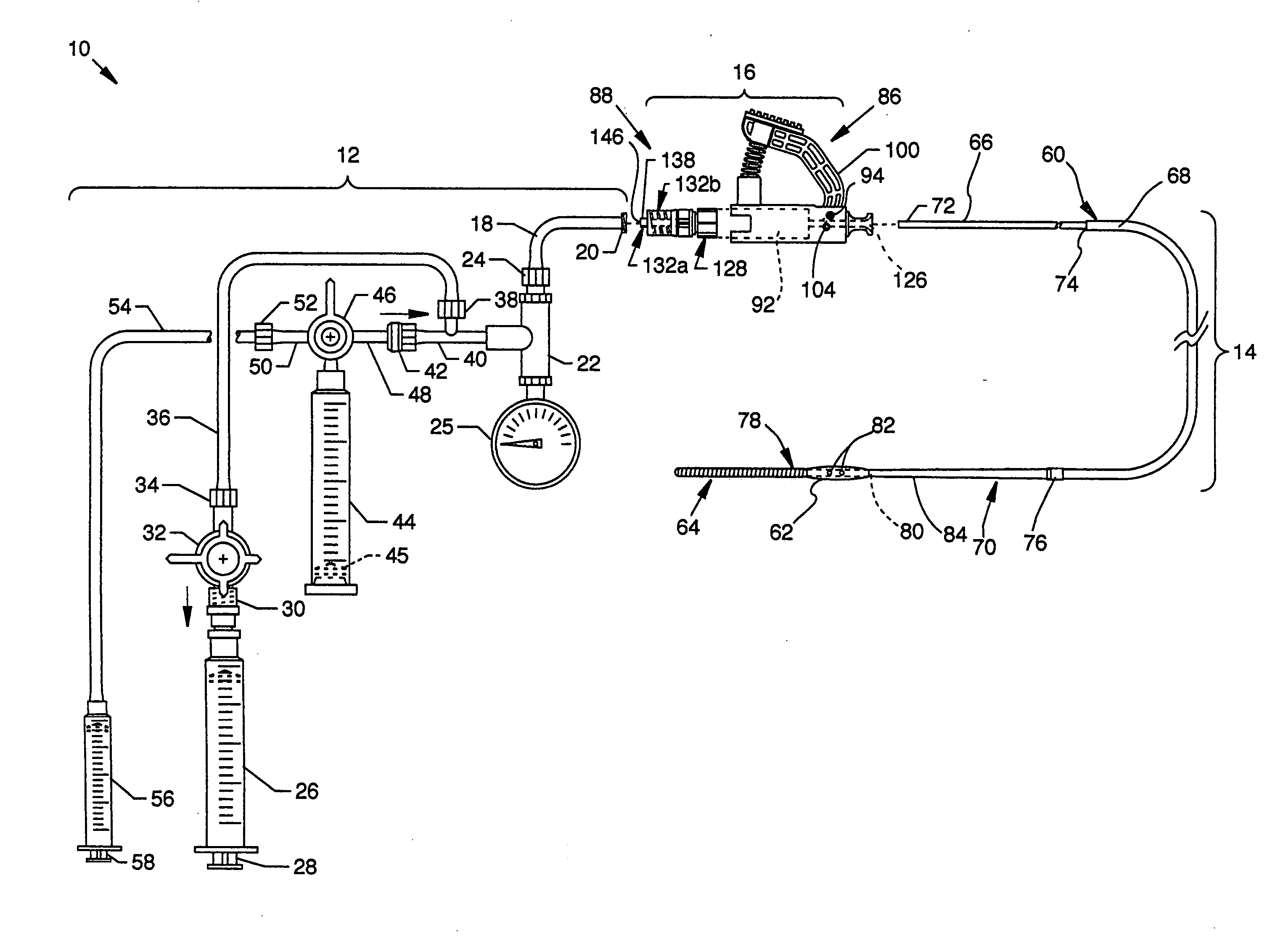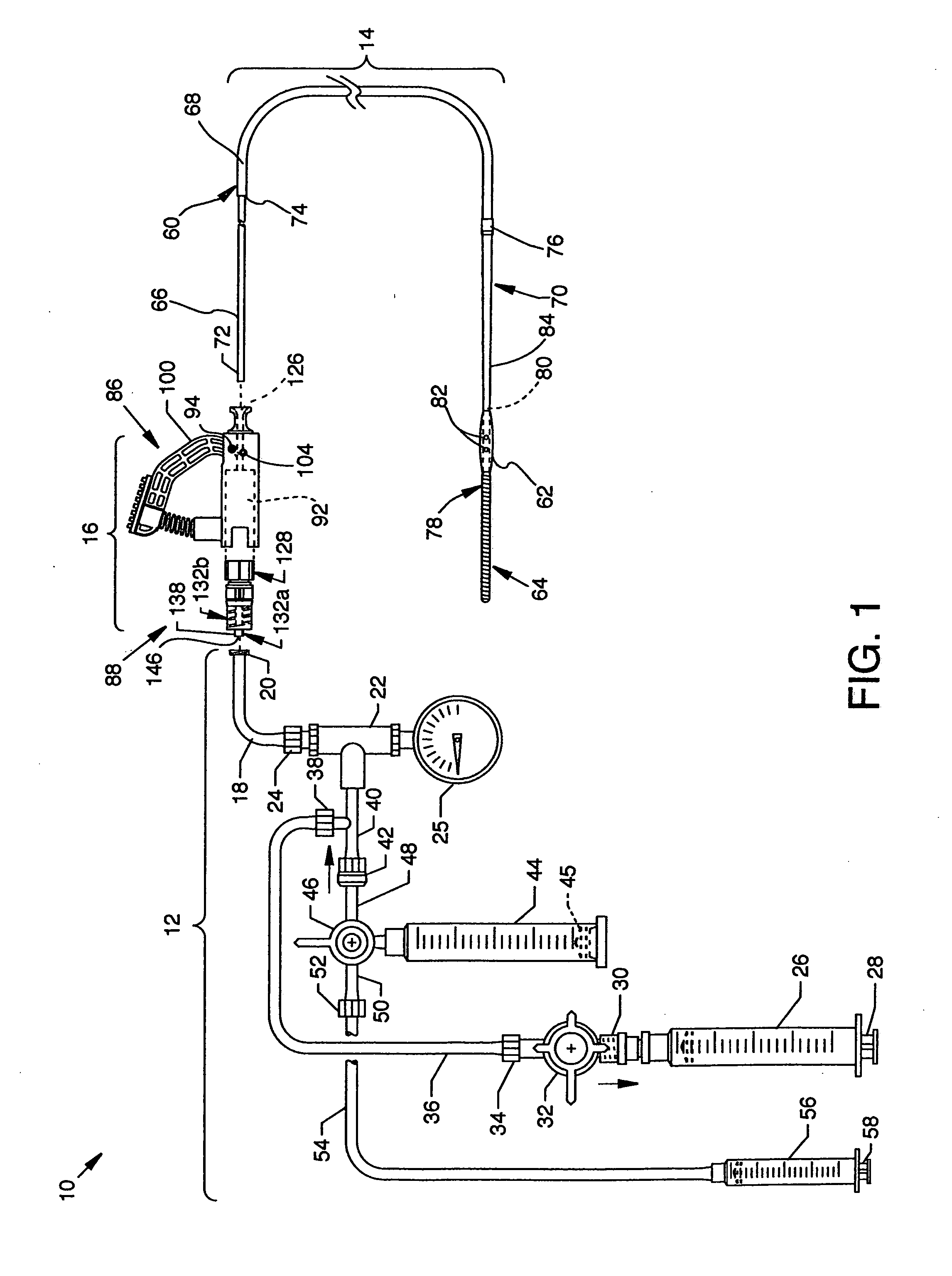Gas inflation/evacuation system incorporating a reservoir and removably attached sealing system for a guidewire assembly having an occlusive device
- Summary
- Abstract
- Description
- Claims
- Application Information
AI Technical Summary
Benefits of technology
Problems solved by technology
Method used
Image
Examples
Embodiment Construction
[0050] Referring now to FIG. 1, the overall structure and operation of a gas inflation / evacuation system incorporating a reservoir and removably attached sealing system for a guidewire assembly having an occlusive device 10 is now described. The instant invention is comprised of several systems or assemblies including a gas inflation / evacuation system 12, a guidewire assembly 14, and a sealing system 16 which sealingly and removably interfaces and cooperatively interacts between the gas inflation / evacuation system 12 and the guidewire assembly 14. Embodiments of related guidewire occlusion systems are relatingly described in further detail in the previously identified co-pending applications: U.S. patent application Ser. No. 10 / 838,464, filed Apr. 29, 2004, entitled “Gas Inflation / Evacuation System and Sealing System for Guidewire Assembly Having Occlusive Device,” U.S. patent application Ser. No. 10 / 012,903, filed Nov. 6, 2001, entitled “Guidewire Occlusion System Utilizing Repeata...
PUM
 Login to View More
Login to View More Abstract
Description
Claims
Application Information
 Login to View More
Login to View More - R&D
- Intellectual Property
- Life Sciences
- Materials
- Tech Scout
- Unparalleled Data Quality
- Higher Quality Content
- 60% Fewer Hallucinations
Browse by: Latest US Patents, China's latest patents, Technical Efficacy Thesaurus, Application Domain, Technology Topic, Popular Technical Reports.
© 2025 PatSnap. All rights reserved.Legal|Privacy policy|Modern Slavery Act Transparency Statement|Sitemap|About US| Contact US: help@patsnap.com



